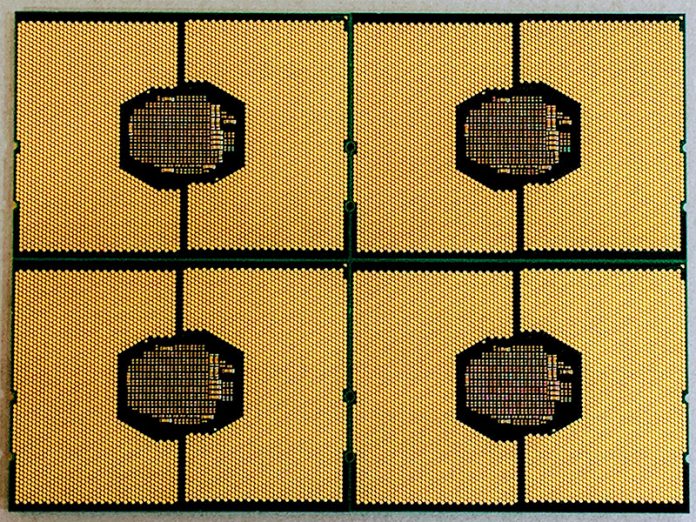Amazon AWS has a lot of high-end hardware and customization that vendors are willing to do for them due to their scale. Intel makes custom off-roadmap SKUs for AWS along with giving large discounts to keep competitors at bay. AWS now has five new bare metal instances available using Intel Xeon Scalable CPUs that are able to hit high all core turbo speeds even with all 12 or 24 cores per CPU under load.
New AWS Bare Metal Instance Feature Table
Here is the key feature table of the new AWS bare metal instances.
| Instance Name | Sustained All-Core Turbo |
Logical Processors | Memory | Local Storage | EBS-Optimized Bandwidth | Network Bandwidth |
| m5.metal | Up to 3.1 GHz | 96 | 384 GiB | – | 14 Gbps | 25 Gbps |
| m5d.metal | Up to 3.1 GHz | 96 | 384 GiB | 4 x 900 GB NVMe SSD | 14 Gbps | 25 Gbps |
| r5.metal | Up to 3.1 GHz | 96 | 768 GiB | – | 14 Gbps | 25 Gbps |
| r5d.metal | Up to 3.1 GHz | 96 | 768 GiB | 4 x 900 GB NVMe SSD | 14 Gbps | 25 Gbps |
| z1d.metal | Up to 4.0 GHz | 48 | 384 GiB | 2 x 900 GB NVMe SSD | 14 Gbps | 25 Gbps |
The r5 and m5 instances support Intel Xeon CPUs that can sustain all core turbo up to 3.1Ghz. With 96 logical processors, these are two 24 core CPUs with Hyper-Threading. If you want faster, with half the cores the z1d.metal instance can hit 4.0GHz and is designed for higher per-core license costs. RAM comes in 384GB increments, or 192GB per NUMA node for the m5.metal, m5d.metal, and z1d.metal instances. Doubling that, the r5.metal and r5d.metal instances come in at 768GB, or 384GB per NUMA node. In each instance name the “d” denotes direct attach NVMe storage. All of the nodes have access to 25Gbps networking.
Overall, these are some fairly heavy duty nodes. Offering bare metal, Amazon AWS has a distinct advantage since they get better component pricing than a customer would purchasing from a tier 1 vendor.
One also has access to the accelerated stacks and robust AWS infrastructure with the new bare metal instances. More so than for the actual hardware itself, the value proposition here is that the bare metal hardware is available in the overall AWS stack and managed by familiar AWS tools.
Availability
Availability will depend on region, however, some regions such as northern Virginia already have all of these instances available. You can learn more about the announcement on the official AWS Blog here.
This is certainly a different direction than the Microsoft Azure Lsv2 instances based on AMD EPYC available announcement earlier this week and shows how competition is heating up.





How much usage would equal the cost of owning the hardware?